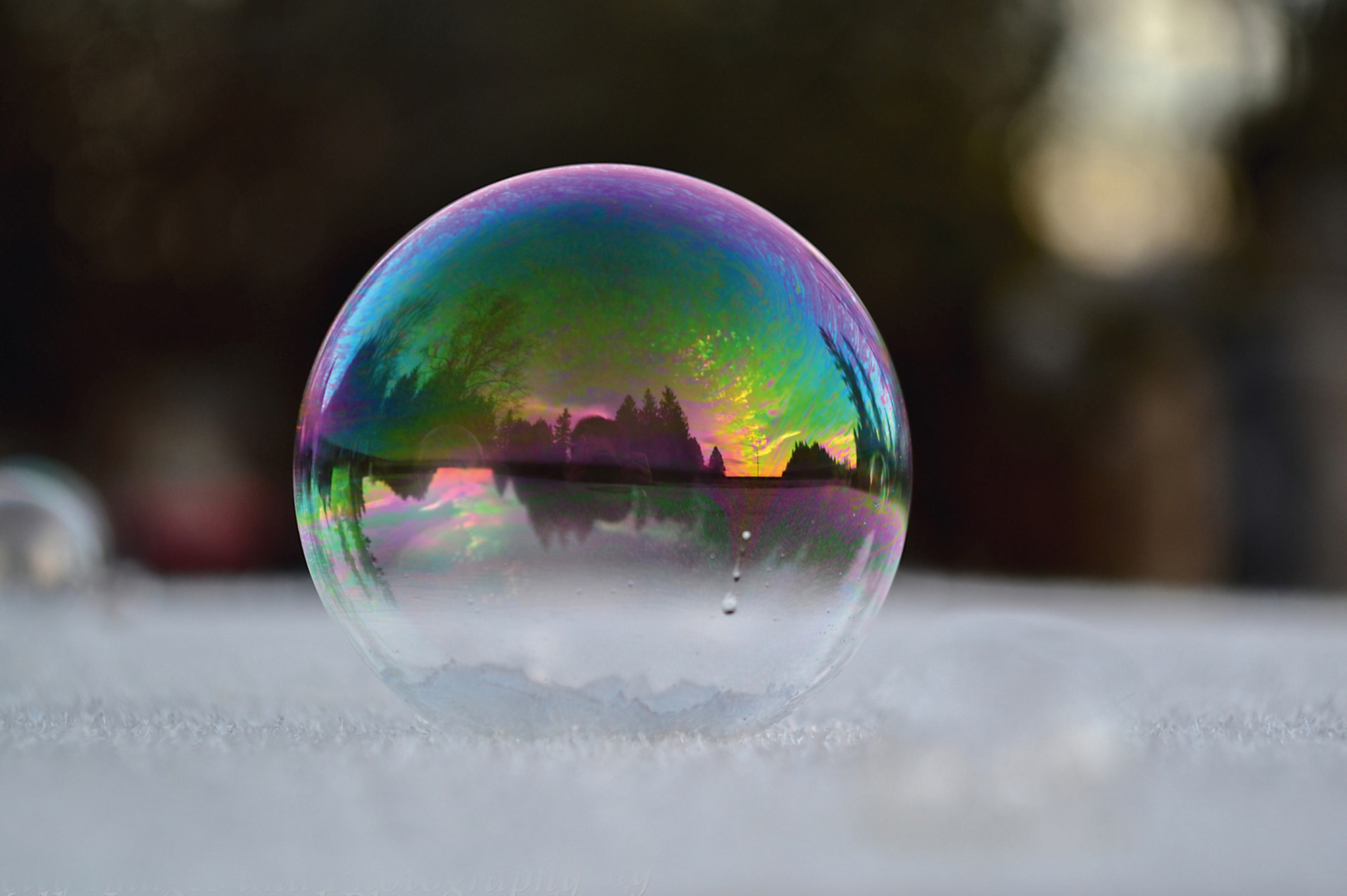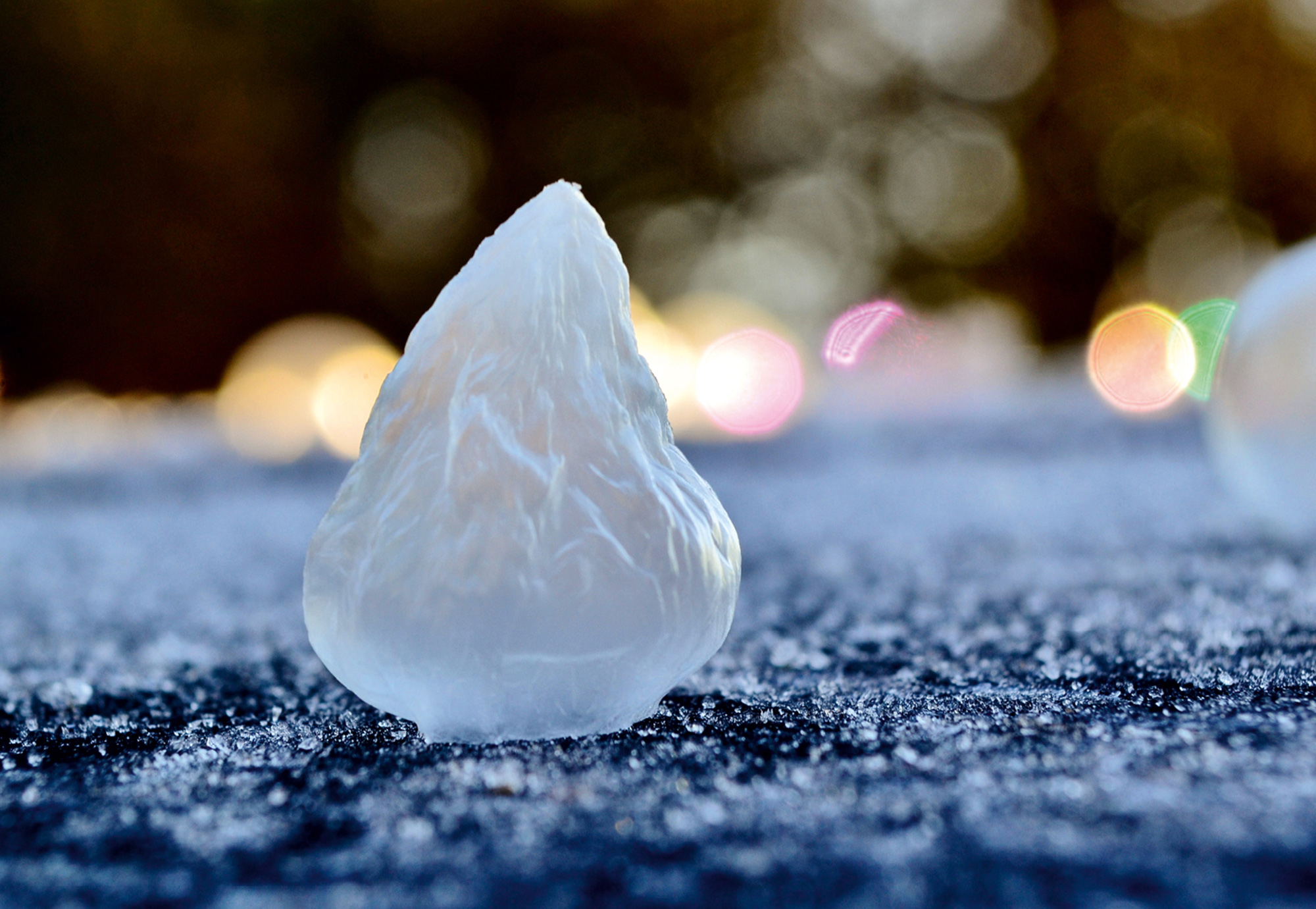Collapse
A few words on middleness
Carol Mavor

collapse, v.
Etymology: < Latin collāps- participial stem of collābi to fall together, < col- together + lābi, lāps- to fall.
—Oxford English Dictionary
Let your lids drop … the fall is always worth it.
—Esther Teichmann, “Fractal Scars, Salt Water and Tears”
Can you freeze soap bubbles? Angela Kelly and her seven-year-old son had a desire to know.[1] Weeks before Christmas, they began their adventure by mixing their own solution out of clear, sugary-sweet Karo syrup (used for cooking American pies and other desserts), distilled water, and dishwashing liquid. (Apparently Joy or Dawn works best; alas no British “Fairy” dish soap for this Washington state mom and her son). With elixir and bubble wands in hand and the temperature dropping to minus thirteen degrees, mother and son braved the freezing outdoors and discovered enchantment.
As it turns out, bubbles blown out of glucose syrup and liquid dish soap not only freeze, they respond to delicate changes in the air and the position of the sun. They metamorphosize into other imagined things: like a snow globe or a collapsing balloon or a dried fig or a cracked eggshell or a human heart.
(Like, as an adjective, assumes a pregnant sense, full of meaning, implying more to come. As Page duBois has shown, Sappho was particularly fond of using like as the first word of a poem, so as to begin in the middle of things:
Like the sweet apple turning red on the branch-top, on the top of the topmost branch, and the gatherers did not notice it, rather, they did notice, but could not reach up to take it.[2])
Like a snow globe, clean, frozen, and fresh, in which the outside world has been mirrored onto the exterior of the delicate transparent ball, not within. The interior is a secret, nothing like the surreal-botanical-dandelion ball found in Hieronymus Bosch’s delightfully pornographic Garden of Earthly Delights, 1490–1510: this veined amniotic sac is home to the erotic play of a naked couple. The touch of a toe, by an upside-down man (his head and torso plunged like a duck diving after frogs as he masturbates), threatens to puncture the fully inflated, perfectly round balloon.
Like a collapsing balloon that droops with middle-
agedness and is in want of inflation.
Like a cracked eggshell discovered in the Snow
Queen’s Winterland, bereft of life.
Like a frozen dried fig dusted in white powdered sugar.
Like a human heart of glass.

Kelly’s iced bubbles—caught by the camera as they turn between solidifying and melting, emerging and collapsing, floating and crashing—are changeling things, not unlike the compound-stuff of fairy tales: frogprinces, boydonkeys, pebblecakes, pumpkincarriages. Although they fall out of wands and are made of soap, they are cousins, if distantly so, to Henri Matisse’s Rorschachy cut-outs, which fell out of his large seamstress scissor-forceps, like things being born, fruits of the womb, in which one thing can mean so many things, like an algae-seaweed-flower-star or a female-nude-parrot-propeller-swimming-shark or an unfurling-fern-frond-snail-shell-butterfly-proboscis-ribbon-candy-confetti or a pomegranate-bat-butterfly. “‘The question is,’ said Alice, ‘whether you can make words [or perhaps bubbles and cut paper] mea